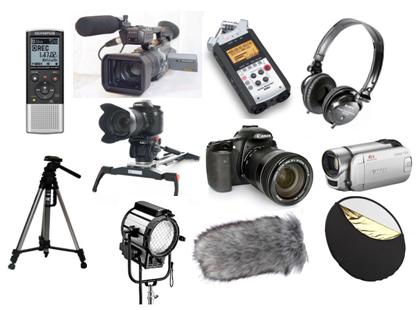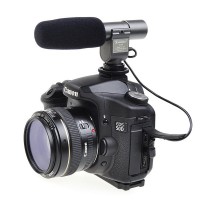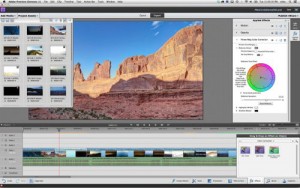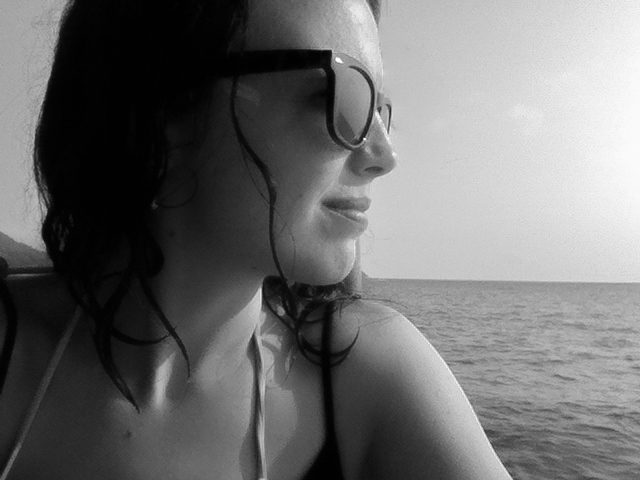
Purchasing film gear is expensive.
I’ve been in the market for a new camera, one that shoots HD video. (Maybe I can earn a few extra bucks uploading some crap to a stock footage website, right?) And then I thought of all the additional gadgets I’d need to pull off a successful shoot on my own: Good lighting, a tripod, editing software, and maybe even audio equipment. Before long, I’m assembling my own film gear kit!
I wondered…can a basic videographer’s kit be built for less than $1,000?
The Camera (1-2 Lenses) – $700
Canon T3i or Nikon D3200.
This kills the majority of the budget, but a decent camera and good lens are (obviously) vital. Occasionally, Amazon will run a deal that includes not just the kit lens, but a telephoto lens as well. Smaller budget commercials, music videos, and independent films have been shot on the T3i and the quality is impressive.
Tip: Choose one brand of camera that you plan on “upgrading”, that way, your lenses will be interchangeable between camera bodies.
1/2016 Update: This is a space that is constantly changing since I wrote this article 3 years ago. I’ve been impressed with the quality of video from Sony’s mirrorless cameras. Check out the a6000 or, for full-frame and bigger budgets, the a7.
Recommended Add-On: Polarizer filter & lens hood (additional $15-$20)
Tripod – $50
A tripod is necessary for any interviews or lock-off shots you may need. High-end tripods cost $2,000+, but for $50, pick up a heavy-duty tripod capable of supporting the weight of your DSLR. Note: If you want to do a lot of handheld recording, shop around for DSLR shoulder mounts or learn how to build a DSLR shoulder mount out of PVC pipe.
Cards and Card Reader – $75
This will depend on the type of camera you purchase – you can pick up a 32GB Transcend SDHC Flash card for $25. Get at LEAST two memory cards to start, three if you can fork it over.
Recommended Add-On: External Hard Drive ($100-$200; FireWire 800 highly recommended for fast transfer of media)
Spare Camera Battery – $50
This is enough to get a name-brand backup battery. You can find an off-brand for a lot less, but in my experience, they don’t hold as much of a charge.
Audio Equipment (Shotgun Microphone)– $30

Eventually, you will need to invest in lavalieres and a mixer (or better yet, an audio guy), but for now, a budget shotgun microphone will boost the audio quality without breaking the bank.
Note: If you have a little more money to spend, pick up a portable Zoom ZH4N recorder, which are easy to operate and will record 4 audio channels.
Lighting – $20
Okay, this may be cheating. You will need lighting of some sort for interviews, but for now, utilize natural light as much as possible and use the reflector to get the extra bounce needed to minimize shadows. (Litepanels, Arri Kits, and Diva Lights are the tools the pros use, but each of those will set you back another $1,000!)
Editing Software (not iMovie) – $75

Final Cut is headed in a downward spiral, and several in the business are turning to Premiere (in addition to AVID).
If you aren’t ready to fork over $700 for Premiere Pro, Premiere Elements will give you editing tools beyond the scope of iMovie.
Can You Buy a Basic Film Gear Package for $1,000?
Yes — but barely. As you can see, buying film and video gear gets expensive quickly!
There are a LOT of different options — don’t get overwhelmed. You will constantly be upgrading and swapping things out, especially as technology advances. Do some research, learn the basics, and choose the gear that will suite the type of filming you’re interested in. B&H Video is a great resource for getting your eyes on all things video, plus they have several great tips for beginners and film students.
Current Prices on Amazon:





 I'm Laryssa, and when I'm not working in film or television, I'm attempting to travel -- or I'm here, providing resources for working in film or travel.
I'm Laryssa, and when I'm not working in film or television, I'm attempting to travel -- or I'm here, providing resources for working in film or travel. 










September 6, 2019
When choosing a videographer, you need to see how you connect with this person. The relationship you have and can build with your photographer takes precedence over any other aspect that may influence your choice, such as pricing.
June 10, 2020
good kit for beginners